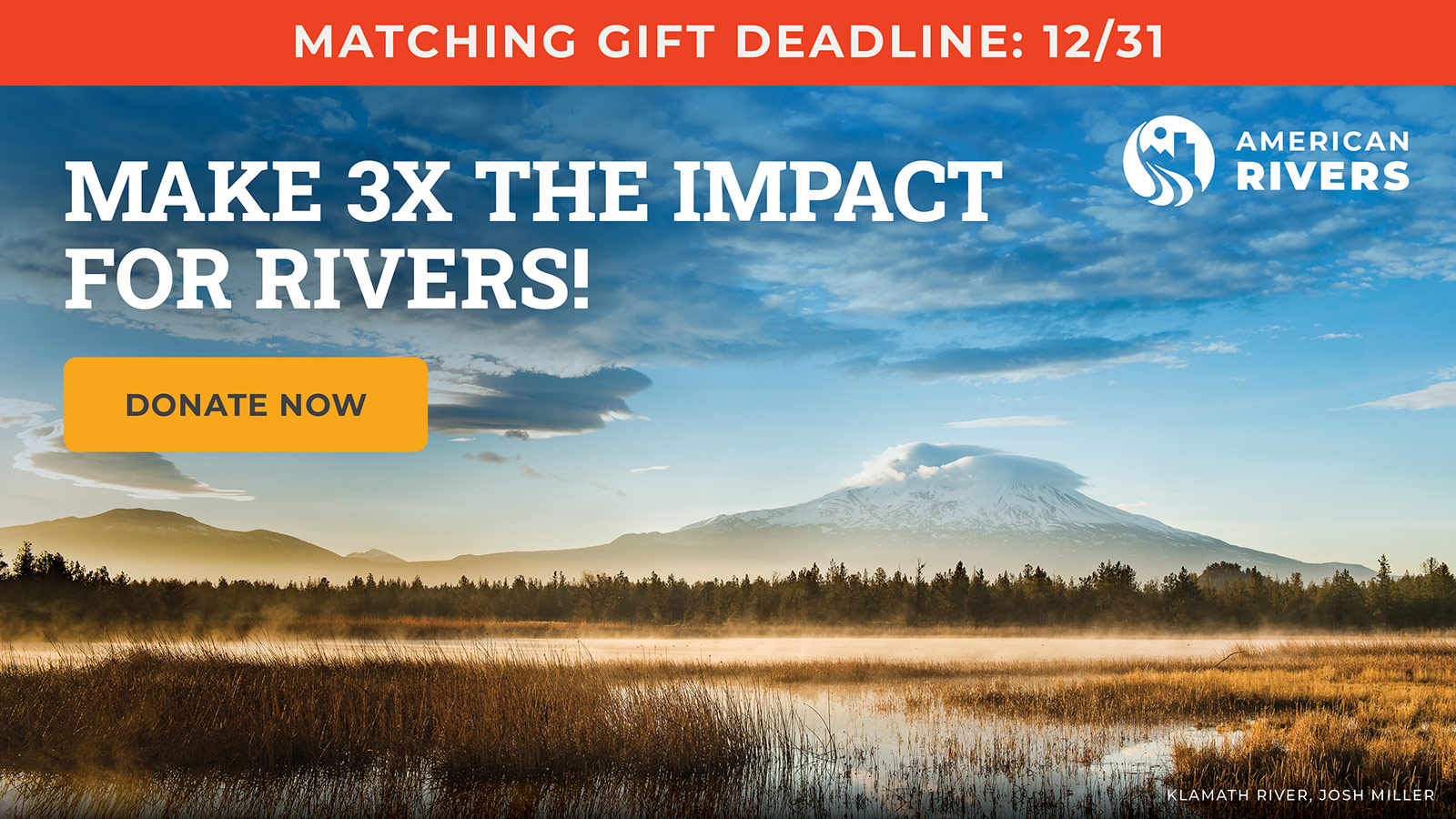Trump’s Infrastructure Plan Fails to Deliver
June 7, 2017
Contact: Amy Kober, 503-708-1145
Washington – President Trump spoke on the bank of the Ohio River today about the nation’s infrastructure, but failed to provide a coherent plan for addressing the pressing need to repair and improve the country’s outdated water systems.
“Today, President Trump promised more tax breaks and rollbacks of environmental safeguards. That isn’t an infrastructure plan,” said Bob Irvin, President of American Rivers. “Ignoring the benefits healthy rivers provide to our communities and economy and slashing safeguards for clean water would take our country backward.”
There are few issues more vital to our health than clean water, and rivers provide more than two-thirds of our nation’s drinking water supplies. But the country’s water infrastructure – including pipes, sewage treatment systems, locks, and dams – is crumbling. Problems ranging from water contaminated by lead pipes in Flint, Michigan, to safety concerns at Oroville Dam, the nation’s tallest dam in California, have grabbed national headlines.
The American Society of Civil Engineers gives our nation’s dams, drinking water systems and levees a “D” grade in its 2017 report card on the nation’s infrastructure. The impacts of outdated water infrastructure and water management fall disproportionately on lower income neighborhoods and communities of color already suffering from a lack of investment and opportunity.
“We need smart public investment in modern water management and 21st century infrastructure. This includes updating water systems to ensure safe, reliable and affordable water supplies, and integrating traditional infrastructure with cost-effective natural solutions that provide multiple benefits to communities. It also includes removing obsolete infrastructure such as unsafe dams and levees. Natural infrastructure solutions are key to ensuring flexibility and reliability in an era of climate change,” said Irvin.
“If we want to make our country stronger for future generations, we must invest in innovative water infrastructure solutions and make healthy rivers a top priority.”
Federal investment in water infrastructure must prioritize the following:
1) UPDATE WATER SYSTEMS TO ENSURE PUBLIC SAFETY
We must replace decaying and dangerously out-of-date drinking water systems (such as lead pipes) and upgrade wastewater treatment plants.
2) PRIORITIZE NATURAL INFRASTRUCTURE
We need a new kind of water management and we need it in the right places. Solutions that protect, restore, and replicate natural systems and use water efficiently have a wide range of social, economic, and environmental benefits. Natural infrastructure can mean planting trees and restoring wetlands, rather than building a costly new water treatment plant. It can mean choosing water efficiency instead of building a new water supply dam. It can mean restoring floodplains instead of building taller levees.
3) REMOVE OUTDATED INFRASTRUCTURE
Many locks and dams provide benefits, but many others have outlived their usefulness, creating an economic drain on communities or dangerous public safety hazards. Nearly 1,400 dams have been removed nationwide and efforts continue. For example, efforts are underway to remove Gorge Dam on the Cuyahoga, and the Army Corps is currently studying whether to retire five locks and dams on the Allegheny River, a tributary of the Ohio River.
4) MAINTAIN ENVIRONMENTAL SAFEGUARDS
When deciding how to address our infrastructure needs, we must not forego the protections provided by laws such as the National Environmental Policy Act, Clean Water Act, and Endangered Species Act in our haste to move projects forward. These laws enable us to look before we leap and think about which path will provide the best and most environmentally-sustainable, long-term solution for our needs.
Resources for journalists:
Economic and social benefits of natural infrastructure (report and infographics) – https://www.americanrivers.org/conservation-resource/naturally-stronger/
Weathering Change: Bringing Federal Policy Into the 21st Century (report) – https://www.americanrivers.org/conservation-resource/weathering-change/
Restoring America’s Rivers: Preparing for the Future (video) – https://www.americanrivers.org/conservation-resources/river-restoration/restoring-americas-rivers-preparing-future/
ABOUT AMERICAN RIVERS
American Rivers protects wild rivers, restores damaged rivers and conserves clean water for people and nature. Since 1973, American Rivers has protected and restored more than 150,000 miles of rivers through advocacy efforts, on-the-ground projects and an annual America’s Most Endangered Rivers® campaign. Headquartered in Washington, DC, American Rivers has offices across the country and more than 250,000 members, supporters and volunteers.
Rivers connect us to each other, nature, and future generations. Find your connections at AmericanRivers.org, Facebook.com/AmericanRivers and Twitter.com/AmericanRivers.


